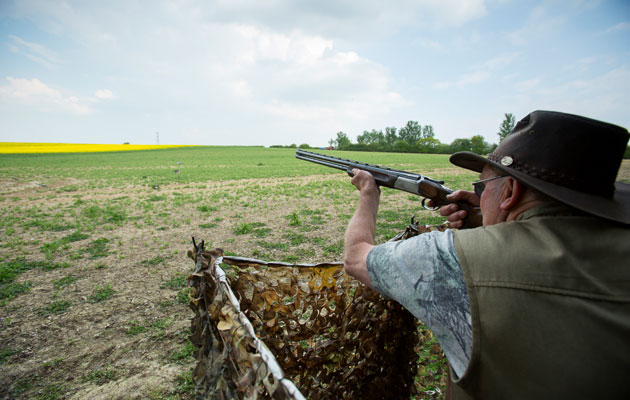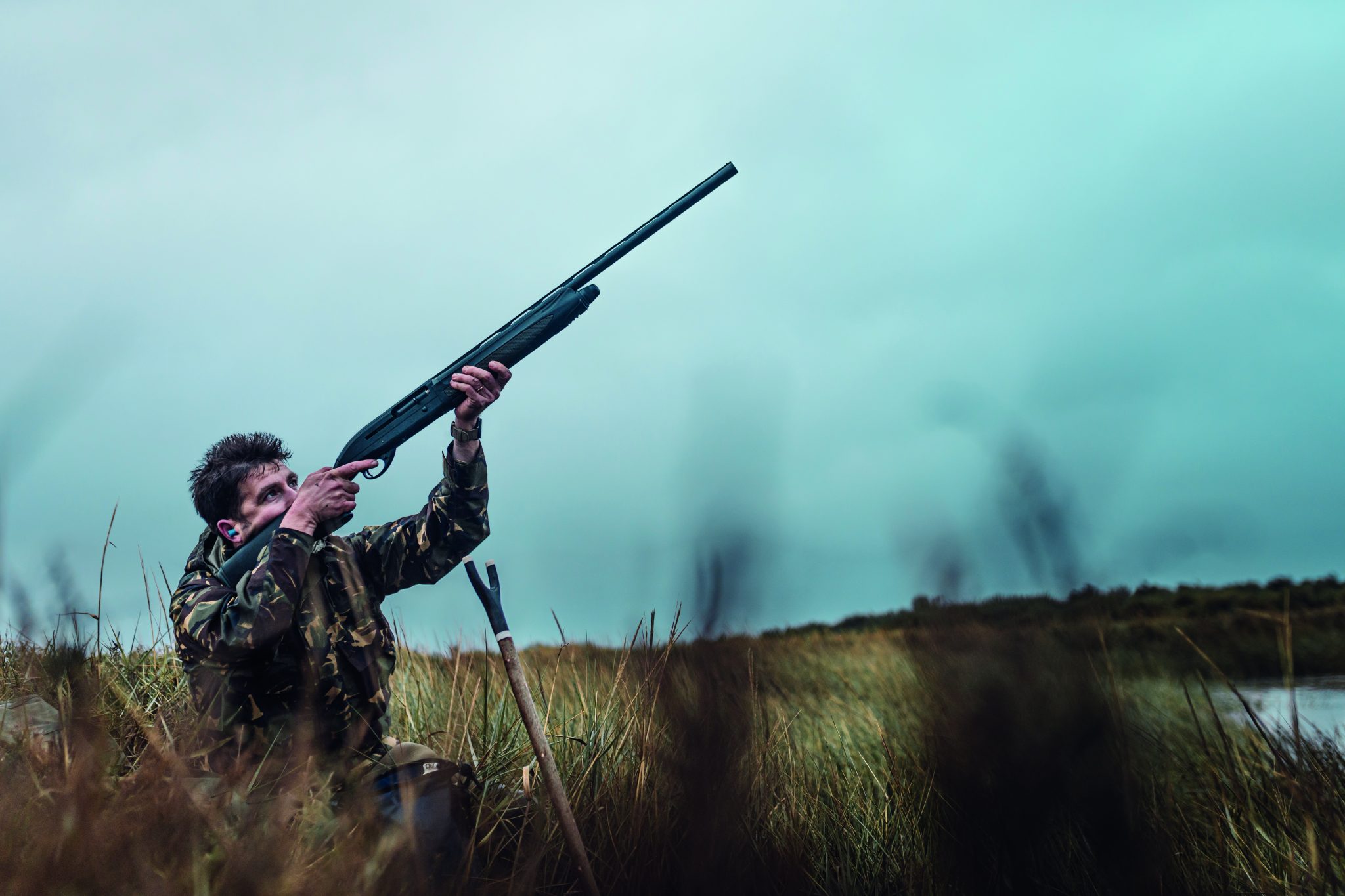Win CENS ProFlex DX5 earplugs worth £1,149 – enter here
How to place rotary decoys

To spin or not to spin – that is the question. Of all the questions that I get asked when I run BASCs pigeon courses, the one that crops up most frequently is: “Do rotary decoys work any more, and if so, where should I place them in the pattern?”
Since these machines hit the decoying scene many years ago, there cannot be a pigeon shooter who does not use one, with varying degrees of success. There is no doubt that they are still a powerful draw, though probably not as effective as they were in the beginning, when pigeons would literally throw themselves at them, even turning back again, after being shot at. While I do not believe pigeons possess the power to reason, they will eventually learn from bad experiences. In other words, if a bird responds to your machine, and gets two barrels of hot lead past its tail for its trouble, you cannot blame it if it is a little wary the next time it sees one spinning around amongst his pals.
Bearing in mind, that at weekends particularly, there may be several decoyers out in a given area, all employing a whirly. This could lead you to believe that these machines can never work, as surely every adult woody in the country has seen one before, and will know the dangers of approaching too close. Luckily, a pigeon’s memory of traumatic frights does not seem to extend to more than a couple of weeks, so, provided it is not scared by spinners on a daily basis, it will usually respond quite well.
It has been noticeable these past few months that pigeons have decoyed to whirlies, almost as well as the good old days. I am convinced this is because they spent the winter feeding on acorns, so were not exposed to the machines for a good three months.
Problems with pigeon decoys
A lot of the problems shooters face with spinners are entirely of their own making, as there are any number of books and videos advising decoyers how to get the best results from them. But still I see people setting the machine in the middle of their pattern, and its arms creeping round far too slowly. So let’s just remind you why rotaries work in the first place. When a pigeon sets off to feed, it does not just fly in a random direction until it spots some of its mates down on the ground. It will know precisely what field it is heading for, and very likely, what part of that field it expects to see its friends feeding. As decoyers, our job is to locate that field too, and to present our pattern on the part of it where incoming birds expect to see their pals tucking in. To help us do that, and to get pigeons in quickly, we know that movement amongst the decoys helps enormously, hence the invention of spinners and flappers.
So far so good, pigeons enter the field, spot the flurry of grey and white, and head our way. At this point, the whirly has done its job, it has shown new arrivals where the feeding flock is located, and so from hereon it is potentially a liability. What happens as the pigeon gets closer to the layout, is that it realises that what it thought was two birds swirling in to land, is actually two birds taking evasive action, particularly when the machine has been placed right in the landing zone. We’ve all learned how quickly pigeons flare away from danger, and will flatly refuse to overfly spinners, so don’t put them where you are trying to get birds to land. Regardless of wind direction, your whirly should always be at least 15 yards upwind of your killing zone, so as not to distract committed birds from trying to land.
As I don’t believe rotaries are particularly realistic in their movement, I think it is the confusion factor that brings pigeons close enough for a shot, so to this end, it needs to be spinning as fast as possible. As soon as the battery starts to die and incoming birds can make out the arms, the deception no longer works. Also, be prepared to change your style of shooting. In nine cases out of ten, once a pigeon gets close to a spinner, and realises its mistake, it will try to get away. If you wait, hoping for two birds to get right in, the first will have flared off, taking the second with it. The days of easy right-and-lefts ended when we began relying on rotaries, it is not at all unusual for a bag of 50 pigeons to consist entirely of single kills.
Scaring more birds than it is attracting?
So, what can you do if your machine is scaring more birds than it is attracting? If you are sure you have put it in the right part of the pattern, but it is still not working, then bring it in. There is every likelihood that the birds have been bashed up very recently by a decoyer using one, and they haven’t yet got over the experience. This is when we tend to use flappers instead, anything up to five at a time. Their design has improved greatly in recent years, with most models employing that essential fast flapping motion. The ones we use are all fitted with random timers, so that there is constant movement all around the pattern. Unlike spinners, we place the flappers right where we want the birds to land, that is, in the middle of the kill zone.
We are all suckers for devices that will enable us to kill more pigeons, but ultimately, fieldcraft and understanding of their habits puts more in the bag. As long as we don’t expect machines to take the place of knowledge, we can all have some fun trying to outwit our ultimate sporting bird.
Related Articles
Get the latest news delivered direct to your door
Subscribe to Shooting Times & Country
Discover the ultimate companion for field sports enthusiasts with Shooting Times & Country Magazine, the UK’s leading weekly publication that has been at the forefront of shooting culture since 1882. Subscribers gain access to expert tips, comprehensive gear reviews, seasonal advice and a vibrant community of like-minded shooters.
Save on shop price when you subscribe with weekly issues featuring in-depth articles on gundog training, exclusive member offers and access to the digital back issue library. A Shooting Times & Country subscription is more than a magazine, don’t just read about the countryside; immerse yourself in its most authoritative and engaging publication.







